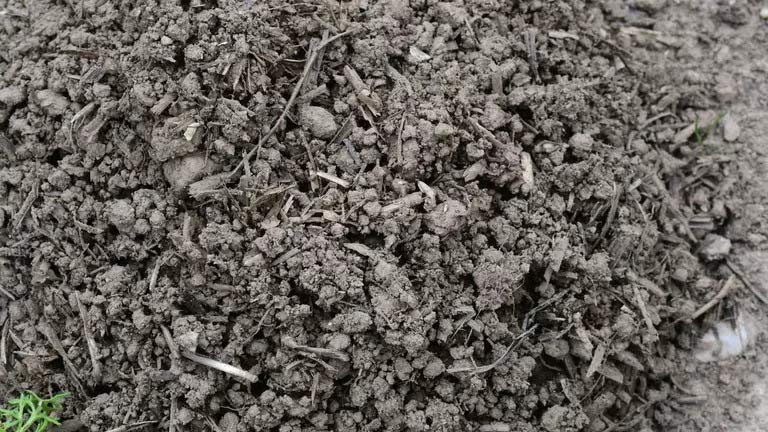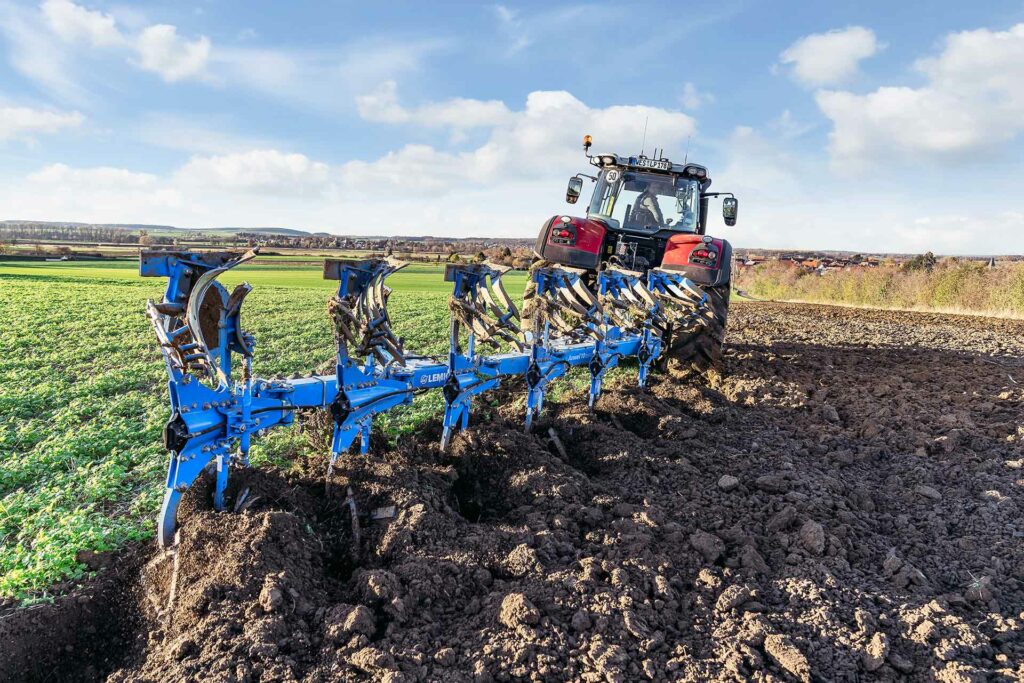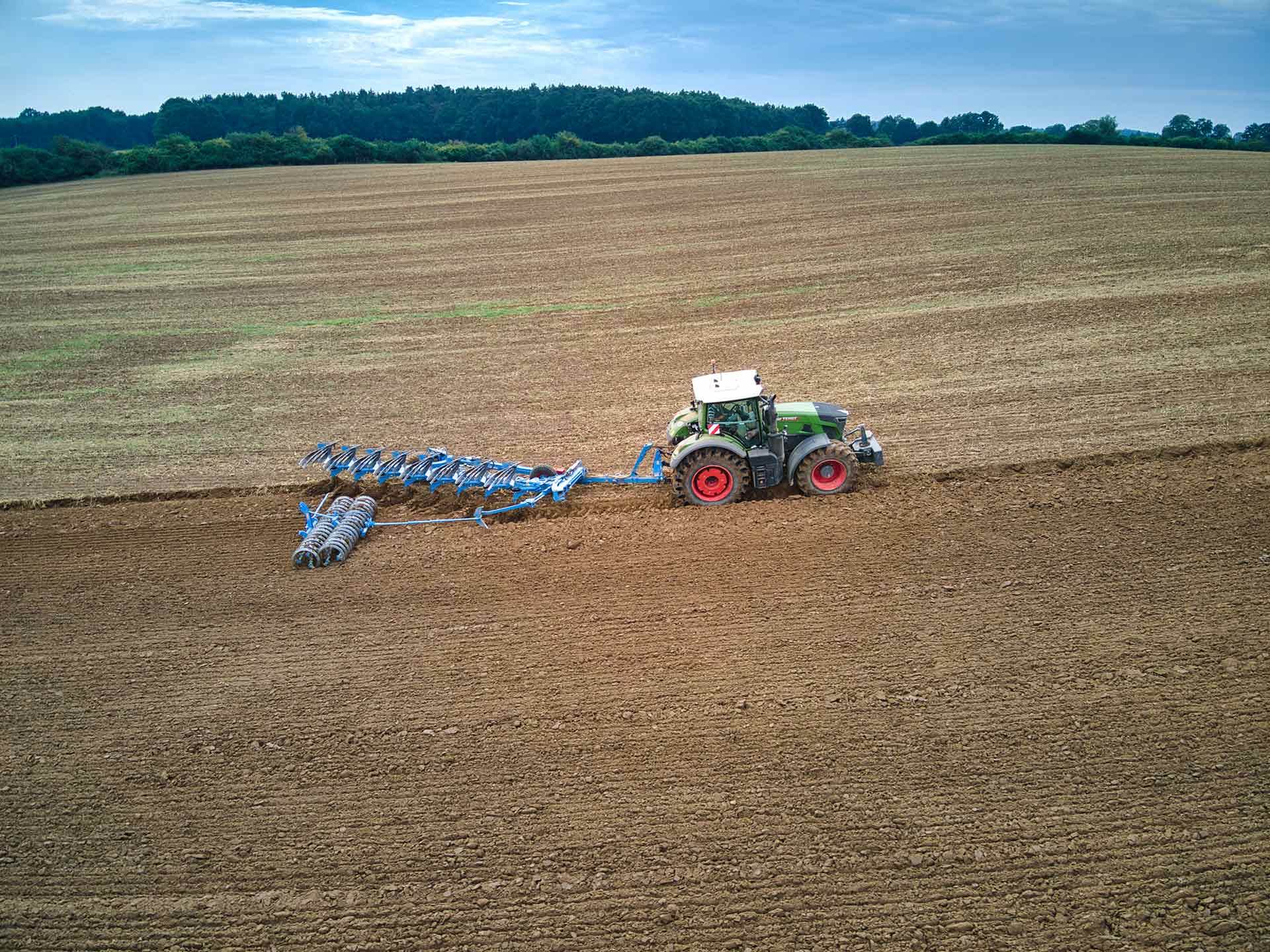
A major advantage of turning the soil with the plough is the “clean table” for trouble-free sowing. Soil that has been overwatered, compacted by harvesting, farmyard manure, unwanted emergence or disturbing harvest residues can be turned away by the plough at a depth as low as the head. If dry soil is brought up in this way, tillage conditions improve.

However, to ensure that plant residues and structural damage do not interfere with the root development of the following crop, a breaking or mixing operation should be carried out before the plough furrow, if possible. In heavy and moist soils or very dry soil, aerate, break and loosen in two steps before ploughing. This helps to avoid lumps. Fine soil (clay, fine silt) and nutrients displaced by precipitation are redistributed in the topsoil by ploughing.

More room to root
A plough furrow is particularly suitable in front of crops that require a well rootable space because they themselves have only a little competitive root system. These include large-grained legumes such as field beans, peas or soybeans. Peas or even soybeans also need a soil surface without crop residues for a smooth harvest, which is best ensured by the plough. This also applies to the cultivation of cereals after cereals. A plough furrow is also appropriate after (grain) maize to stop not only the corn borer but also Fusarium.
Restricting N fertilisation in autumn will mean that ploughing before rape will have to be more frequent again in order to take advantage of the higher N release in autumn.
Correct reconsolidation – Not without packers
Each loosening increases the proportion of voids – a plough furrow, for example, creates 30% more crumb volume. Due to better air access, the soil warms up faster. In addition, the horizon dries faster, which can be positive under (too) wet conditions, e.g. to be able to till dry in spring. A rougher surface absorbs precipitation better, and frost also penetrates faster and deeper into a winter furrow (frost gare).

The disadvantages of hollows:
- Faster drying out of the soil
- Erosion of fine soil (clay, silt) during rainfall
- Low load-bearing capacity and thus a higher risk of compaction by loads
- Poor root development due to lack of soil contact
Because voids interrupt pore continuity, water and nutrients can neither rise capillary nor infiltrate from an overlying crumbly layer.
Optimum reconsolidation
To minimise the amount of voids, one must reconsolidate loosened and ploughed soil to the same depth as it was previously loosened. From a crop production point of view, the plough furrow or deep loosening with the cultivator must be followed by a ring packer. With a sufficiently large diameter and sharp rings, this cuts deep enough to reconsolidate the soil, loosening from the bottom to the top. For larger seed widths that do not allow a front packer in front of the tractor, the packer must attach to the plough or behind the cultivator. After loosening the soil to a depth of one crumb, pure sandy soils, but also clay soils, are difficult to reconsolidate.
What happens to compressions?
Deeply loosened tramlines or subsoil compaction cannot be sufficiently reconsolidated. Air-filled voids remain, into which fine soil can erode through precipitation. This worsens the cation exchange capacity (CEC) in the upper crumb area and limits the usable field capacity (UFC). New and deeper compaction can occur as a result of renewed driving. Subsoil compaction should only be broken up in narrow strips in front of a deep-rooted crop. To avoid having to solve the same problems again and again with poor compromises, it is advisable to eliminate the causes of damaged compaction as best as possible.
The frequently practised deep ripping of tramlines is rather counterproductive – especially if they dry out afterwards and volunteer cereals and volunteer rape cannot emerge. It makes more sense to only loosen the tramlines in two steps to the depth of the crop with the cultivator and to let a packer run along.
Source: top agrar 03/2021 (S. 92-97)
Authors: Dr. Ute Kropf, Kiel University of Applied Sciences and Prof. Dr. Hansgeorg Schönberger, N.U. Agrar GmbH